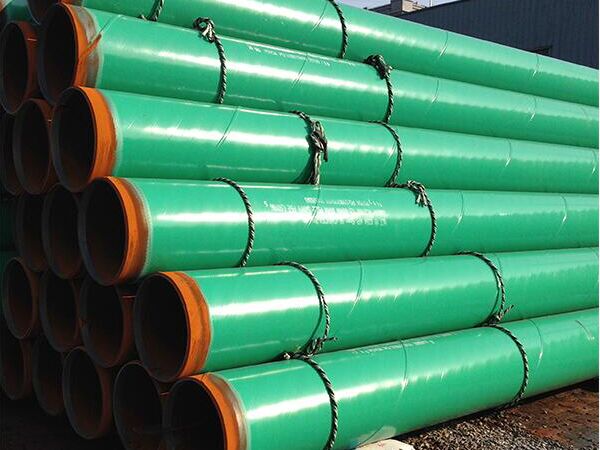Fusion Bonded Epoxy Coating
The coating on the inside of the pipe can effectively isolate the direct contact with corrosive gases or fluids, reduce the corrosion of the pipe and improve the smoothness of the inner wall of the pipe, improve the flow of fluids, enhance the efficiency of transportation, and reduce the accumulation of sediments.

Fusion Bonded Epoxy Coating (FBE) is a compact anticorrosive coating composed of epoxy resin, curing agent, pigment, etc., which is formed after high-temperature melting and curing.
PBE coating features:
Excellent corrosion resistance: FBE coating can effectively prevent steel pipe rust and corrosion, suitable for long-term exposure to corrosive environment of the pipeline.
High temperature resistance: FBE coatings have high temperature resistance and are usually able to operate at temperatures between -50°C and 100°C.
With environmental protection characteristics: FBE coating will not emit any harmful substances when used, and has environmental protection characteristics.
Durability: FBE coatings have a certain degree of durability, can withstand impact, as well as reduce wear during use, especially suitable for industrial environments.
Application of FBE coating:
1. Pipelines: FBE coatings are widely used for pipeline protection in the oil, gas and water industry, especially for buried or subsea pipelines.
2. Steel structure: in harsh environments, FBE coating is also applied to anti-corrosion protection of steel structures, especially in special places such as offshore platforms.
3. Other steel equipment: such as storage tanks, valves, pipe fittings and other industrial steel products, FBE coating will also be used to enhance anti-corrosion performance.
Application process of FBE coating:
Surface preparation: First, the surface of the steel pipe needs to be thoroughly cleaned to remove oil, rust and other contaminants. Common surface treatment methods include sandblasting, pickling or chemical cleaning.
Heated steel pipe: After cleaning, steel pipe is heated to about 200-250°C (392-482°F).
Coating epoxy powder: The epoxy powder is uniformly sprayed onto the surface of the heated steel pipe by electrostatic spraying. Due to the high surface temperature of the steel pipe, the powder will automatically adsorb after contact with the surface.
Melting and curing: After spraying, the steel pipe will continue to heat, so that the powder melts and combines with the surface of the steel pipe to form a uniform coating. The coating then cools and cures, forming a hard protective layer.
